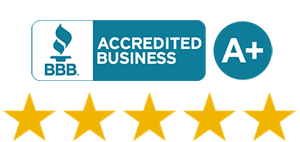When it comes to maintaining a clean and healthy environment, we often hear the terms cleaning, sanitizing, and disinfecting used interchangeably. But are they really the same thing? Understanding the key distinctions in these health practices is crucial for effective hygiene and preventing the spread of germs. So, how do cleaning, sanitizing, and disinfecting differ from each other?
The Fundamentals of Hygiene: Cleaning, Sanitizing, and Disinfecting
Hygiene practices play a vital role in preventing the spread of germs and maintaining overall health. Importance of hygiene, including regular cleaning, sanitizing, and disinfecting, cannot be overstated. Each of these practices serves a crucial purpose in ensuring a safe and healthy environment.
Cleaning is the first step towards maintaining proper hygiene. It involves the physical removal of dirt, dust, and debris from surfaces. Cleaning not only improves the appearance of the surroundings but also eliminates visible impurities that may harbor germs.
Sanitizing goes a step further by reducing the number of germs on surfaces to a safe level. It involves the use of appropriate sanitizing agents to kill and inhibit the growth of harmful microorganisms. This helps to minimize the risk of infections and illnesses.
Disinfecting is the most potent method for preventing the spread of germs. It involves using stronger disinfectants that are designed to kill a wide range of bacteria, viruses, and other pathogens. Disinfecting surfaces and objects helps to eliminate harmful germs and reduce the risk of cross-contamination.
By incorporating these practices into our daily routines, we can ensure a safer environment for ourselves and others. The health benefits of cleaning, sanitizing, and disinfecting extend beyond preventing the spread of germs. They also help to minimize allergies, respiratory problems, and various other health issues caused by microbial contaminants.
Whether it’s our homes, workplaces, or public spaces, practicing proper hygiene by regularly cleaning, sanitizing, and disinfecting is crucial for safeguarding our health and well-being.
What’s the Difference Between Cleaning, Sanitizing, and Disinfecting?
Understanding the distinctions between cleaning, sanitizing, and disinfecting is essential for maintaining a clean and hygienic environment. While these terms are often used interchangeably, they have different meanings and purposes.
Cleaning is the initial step in the process, involving the physical removal of dirt, dust, and debris from surfaces. This can be achieved by using soap or detergent and water, along with scrubbing or wiping. Cleaning helps to eliminate visible impurities and improves the overall appearance of surfaces.
However, it’s important to note that cleaning may not necessarily kill germs, as its main focus is on removing the physical presence of impurities. To effectively eliminate germs and reduce the risk of infections, additional steps are needed.
Sanitizing is the process of reducing the number of germs on surfaces to a safe level, as determined by public health standards. It is typically done after cleaning and can be achieved using sanitizing products or disinfectants, depending on the specific requirements. Sanitizing is particularly important in areas where bacteria and viruses are a concern, such as kitchens and bathrooms.
Disinfecting, on the other hand, involves the use of chemicals to kill germs on surfaces. Disinfectants are designed to destroy a wide range of pathogens, including bacteria and viruses. This process is typically more intensive than sanitizing and is often necessary in healthcare facilities or high-risk areas.
By understanding the differences between cleaning, sanitizing, and disinfecting, individuals and businesses can implement the appropriate measures to maintain a clean and healthy environment. It’s important to choose the right cleaning methods and products that suit the specific needs and surfaces being cleaned.
What’s the Difference Between Cleaning, Sanitizing, and Disinfecting?
Sanitizing and disinfecting are two distinct processes that are often misunderstood. It is important to understand the differences between these two terms to effectively maintain a clean and safe environment.
Definition of Sanitizing:
Sanitizing refers to the process of reducing the number of germs on surfaces to a safe level, as determined by public health standards. The goal of sanitization is to minimize the risk of transmitting diseases by reducing the number of viable microorganisms present.
Definition of Disinfecting:
Disinfecting, on the other hand, involves the use of chemicals or physical methods to kill germs on surfaces and objects. Unlike sanitizing, the aim of disinfection is to destroy a wide range of pathogens, including bacteria and viruses, rather than simply reducing their numbers.
Sanitizing can be achieved through various methods, including cleaning with soap and water, or using sanitizing agents. These methods are effective in reducing the number of germs but may not completely eliminate them. Disinfecting, on the other hand, ensures that a surface or object is free from harmful microorganisms by killing them.
Reducing germs to a safe level through sanitizing is important for maintaining good hygiene practices. This is especially crucial in environments where cleanliness is paramount, such as hospitals, clinics, and food preparation areas. Disinfecting is necessary in situations where surfaces need to be thoroughly disinfected, such as during outbreaks or in areas with high-risk populations.
Practical Applications: Cleaning and Disinfecting in Everyday Life
Maintaining a clean and healthy home environment is crucial for the well-being of your family. By implementing effective home hygiene practices, such as regular cleaning and disinfecting, you can help prevent the spread of germs and reduce the risk of infections.
High-touch surfaces, such as doorknobs, light switches, and countertops, tend to accumulate germs and bacteria. Cleaning and disinfecting these surfaces on a regular basis can significantly reduce the chances of transmitting illnesses to your loved ones. It is important to note that cleaning alone may not effectively eliminate harmful pathogens. Therefore, combining cleaning with proper disinfection is essential.
- Cleaning: Begin by removing any visible dirt, dust, or debris from the surfaces using soap or detergent and water. This physical action helps eliminate impurities and improve the overall appearance of the surfaces.
- Disinfecting: After cleaning, it is crucial to disinfect the high-touch surfaces using appropriate disinfectants. Disinfectants are specifically designed to kill germs and bacteria, reducing the risk of infections. Follow the instructions on the disinfectant product for optimal results.
Establishing a cleaning routine is vital to maintaining a safe and germ-free home environment. Set aside regular time intervals, such as daily or weekly, to clean and disinfect high-touch surfaces. This proactive approach will help prevent the accumulation of germs and ensure that your home remains a healthy space for your family.
It is also important to use appropriate cleaning products for different surfaces. Different surfaces may require specific cleaning methods and products. For example, using harsh chemicals on delicate surfaces can cause damage, while using gentle cleaners on heavily soiled areas may not effectively remove germs. Refer to the product labels and manufacturer’s recommendations for guidance on selecting appropriate cleaning products for different surfaces.
By incorporating regular cleaning and disinfecting routines into your daily life, you can create a clean, safe, and healthy home environment for you and your loved ones.
Selecting the Right Products for Cleaning, Sanitizing, and Disinfecting
When it comes to maintaining effective hygiene practices, selecting the right cleaning and disinfecting products is crucial. The choice of products can significantly impact the cleanliness and safety of your environment. Consider the following criteria when selecting appropriate cleaning products, disinfectants, and ensuring safety considerations:
- Selecting Appropriate Cleaning Products: Take into account the type of surface you will be cleaning. Different surfaces may require specific cleaning methods or products. For example, certain surfaces may be sensitive to harsh chemicals, while others may require stronger cleaners to remove stubborn stains or grease. It is important to choose cleaning products that are suitable for the surfaces you are working with.
- Criteria for Choosing Disinfectants: When selecting disinfectants, you should consider their effectiveness against specific pathogens. Look for disinfectants that are proven to kill a wide range of germs, including bacteria and viruses. Pay attention to the product labels, as they often list the specific pathogens the disinfectant is effective against.
- Safety Considerations for Cleaning Products: Prioritize safety when using cleaning products. Always follow the instructions provided by the manufacturer to ensure proper usage. Store cleaning products in a secure location, away from children and pets. Some cleaning products may also require the use of personal protective equipment, such as gloves or goggles, to safeguard against potential hazards. Taking these safety considerations into account will help you use cleaning products responsibly.
By carefully selecting the appropriate cleaning products, choosing disinfectants based on their effectiveness, and prioritizing safety, you can ensure effective cleaning, sanitizing, and disinfecting practices in your environment.
Commercial Cleaning: Best Practices in Business Settings
Maintaining a clean and safe work environment is crucial for businesses, especially those that serve customers, clients, or patients. Implementing effective cleaning protocols involves a combination of cleaning, sanitizing, and disinfecting practices tailored to the specific needs of the business. Regular cleaning of high-touch surfaces, providing necessary cleaning supplies, and promoting hygiene awareness among employees are some key strategies for creating a safe work environment.
When it comes to commercial cleaning best practices, businesses should prioritize the cleanliness and hygiene of their premises to ensure the well-being of employees, customers, and visitors. The COVID-19 pandemic has emphasized the importance of implementing thorough cleaning protocols to prevent the spread of viruses and other pathogens. By following cleaning protocols for businesses, companies can create a safe work environment and demonstrate their commitment to maintaining a healthy space.
A crucial aspect of commercial cleaning best practices is regular cleaning of high-touch surfaces. These surfaces, such as doorknobs, elevator buttons, and light switches, can harbor a higher concentration of germs and bacteria. Cleaning these areas frequently with appropriate disinfectants helps to minimize the risk of contamination and transmission of diseases.
Aside from regular cleaning, providing necessary cleaning supplies is another important aspect of commercial cleaning best practices. Businesses should ensure that employees have access to hand sanitizers, disinfectant wipes, and other cleaning agents to promote personal hygiene and encourage regular cleaning habits. These supplies should be strategically placed in easily accessible areas throughout the workplace to facilitate quick and convenient cleaning routines.
Promoting hygiene awareness among employees is also vital in creating a safe work environment. Companies should develop comprehensive training programs to educate employees on proper cleaning and sanitizing techniques. These training programs should emphasize the importance of maintaining a clean and hygienic workplace and provide guidelines for cleaning protocols specific to the business’s needs.
By implementing these commercial cleaning best practices, businesses can create a safe and healthy work environment that instills confidence in employees, customers, and visitors. Regular cleaning, thorough disinfection, and hygiene education are essential components of maintaining a clean and safe workplace.
Conclusion
Understanding the differences between cleaning, sanitizing, and disinfecting is crucial for maintaining proper hygiene practices and preventing the spread of germs and infections. Each process serves a distinct purpose in removing impurities and reducing the risk of transmitting diseases.
By incorporating these practices into our daily routines, we can create safer environments for ourselves and others, both in our homes and in business settings. Regular cleaning helps to remove visible dirt, dust, and debris from surfaces, improving their appearance and overall cleanliness.
Sanitizing is essential for reducing the number of germs on surfaces to a safe level, as determined by public health standards. This process is particularly important for frequently touched surfaces, such as doorknobs and countertops. Disinfecting, on the other hand, involves the use of chemicals to kill germs on surfaces and objects, providing an additional layer of protection against pathogens.
Maintaining a healthy and hygienic lifestyle requires a combination of regular cleaning, effective sanitizing, and proper disinfecting. By prioritizing these practices, we can play a significant role in preventing the spread of germs and ensuring the well-being of ourselves and those around us.





